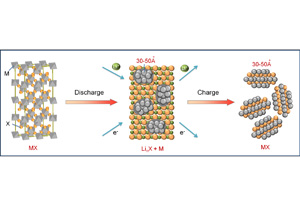

电化学转换反应及其在二次电池中的应用
收稿日期: 2014-11-17
修回日期: 2015-01-27
网络出版日期: 2015-01-31
基金资助
国家自然科学基金青年项目(No. 21403305)资助
Electrochemical Conversion Reactions and Their Applications for Rechargeable Batteries
Received date: 2014-11-17
Revised date: 2015-01-27
Online published: 2015-01-31
李婷 , 杨汉西 . 电化学转换反应及其在二次电池中的应用[J]. 电化学, 2015 , 21(2) : 115 -122 . DOI: 10.13208/j.electrochem.141047

/
| 〈 |
|
〉 |